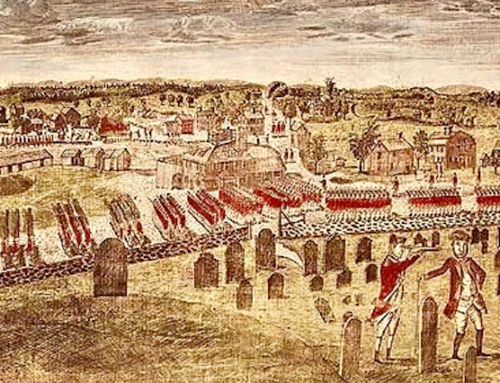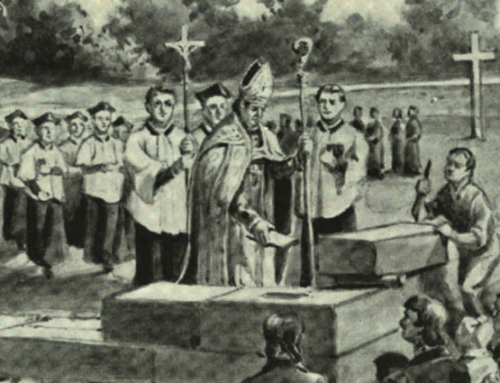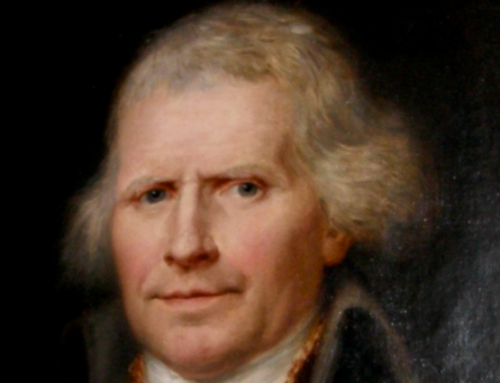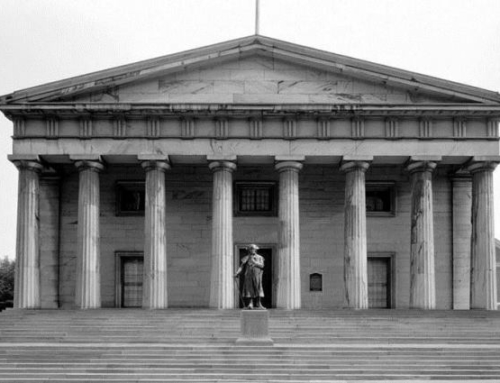 Meg Greenfield, the liberal (1950s style) boss of The Washington Post’s editorial page for the last quarter of the twentieth century, gave the name “The Nixon Generation” to people of her age cohort (born ca. 1928-44). “What distinguishes us as a group,” she wrote, “is that we are too young to remember a time when Richard Nixon was not on the political scene, and too old reasonably to expect that we shall see one.” That’s my generation (b. 1940), often called the “Silent Generation” or the “No-Name Generation,” sandwiched in between the heroic “Greatest” and the self-indulgent “Baby-Boomers,” the latter now in the process of giving up the ghost to who knows what? One hopes, to an era of America First.
Meg Greenfield, the liberal (1950s style) boss of The Washington Post’s editorial page for the last quarter of the twentieth century, gave the name “The Nixon Generation” to people of her age cohort (born ca. 1928-44). “What distinguishes us as a group,” she wrote, “is that we are too young to remember a time when Richard Nixon was not on the political scene, and too old reasonably to expect that we shall see one.” That’s my generation (b. 1940), often called the “Silent Generation” or the “No-Name Generation,” sandwiched in between the heroic “Greatest” and the self-indulgent “Baby-Boomers,” the latter now in the process of giving up the ghost to who knows what? One hopes, to an era of America First.
Meg and I saw the end of Nixon politically (she was happy; I wasn’t, at least until Reagan), although he ended up with as many lives as T.S. Elliott/Andrew Lloyd Weber’s Cats. Fast-forward to 1992, and the eerie epiphany I had in the voting booth on November 3, Election Day.
The Almighty Polls had been predicting a Bill Clinton victory and they seemed to be right, especially given the ratty little presence of Mr. H. Ross Perot, who for some good reasons and some bad ones had it in for President Bush. As I pulled the Republican lever, only a little reluctantly (“New World Order,” George H.W. had said; as scary then as now), I felt like an oozing oil spill had just been dumped on my head—you know, slime that will not rub or wash off. The spill was not the New World Order; it was the Clintons. They had not yet formed the firm of Soros, Saudi and Saul (Alinsky) that became the Clinton Foundation, the millstone hanging around the collective necks of the Baby-Boomers, just as Watergate seemed to weigh down the No-Namers. But the slime was palpable. They were a 60s couple who had used Ivy League connections, a certain soulless intelligence, and a failed governorship in a failed small state to ooze their way to the edges of the Ruling Elite. Nobody who had watched their arrogant exercise in self-definition on television, on 60 Minutes, trying to paper over charges of marital and sexual improprieties and rumors of corruption, could fail to feel at least a little dirty when it came time to vote. I remember thinking, please God, let there be just enough of that good old American common sense and republican virtue left to turn these grifters down. Alas.
The point here is not to rehearse the Clinton record since 1992. Victor Davis Hanson has done that admirably—asking what is their “telos,” their “end point,” in all the power seeking and the endless scandals of the past quarter century. This, rather, is an act of anamnesis, of remembrance, and an attempt to pass that remembrance on to generations to whom No-Namers like me are often quaint grandfathers, low-tech candidates for assisted living, or just grumps who refuse to welcome the relativist politically correct anti-culture that has accompanied the Clinton Generation.
The Nixon Generation lasted, from Meg Greenfield’s point of view, a little less than three decades (1946-1974). Voting citizens never brought it down. Newspapers—the “media” in general—brought it down. Nixon had never quite made it to the respectable Ruling Class, and so they let it happen. The Clinton Generation has so far lasted almost as long (1990-2016), and the media have propped it up, almost unbelievably so until very lately. Their ability to court, or at least to neutralize the Ruling Elite has kept them in power and prosperity. That Elite is utterly unwilling to let their current nemesis, Donald Trump, even near the front door. But this generational cohort, or rather an alliance of cohorts from No-Namers to Millennials, has the opportunity to vote them out, and thus end the Clinton Generation’s power forever.
This would be a great moral service to the United States of America. It will not result in a moral service if the nation is subjected to years of litigation and recrimination. Without that defeat they will never go away, but if their influence disappears their corruption largely disappears. In itself, the defeat will allow for a great moral cleansing. Unlike what Meg Greenfield thought about Nixon, we can imagine a time without the Clintons.
But what would replace them? The answer—and this is what so many of us seem unable or unwilling to understand—is not just plucking out a corrupt harridan and inserting a boorish protofascist in her place, replacing the devil we know with the devil whose darkness could be even more frightening. The answer is that we will have the potential for regime change; or as I like to think of it, regime restoration. We will have the best opportunity yet to phase out the New Deal and phase in America First, which can be the republic restored, rather than the empire achieved.
This view does not even require that Hillary and The Donald assume the roles that the strange coalition of prigs, neocons, overly moralistic sentimentalists, special interests and ideologues have been so anxious to assign them. The Clintons aren’t truly evil—few people think they are; Mr. Trump is not a fascist—nobody really thinks so. The Clintons are the corrupt remnants of a regime that in its Wilsonian world view long ago ceased to represent the promise of progress, equality and democracy to ordinary Americans. Insofar as they have an idea for their country it is a half-hearted egalitarian globalist imperialism, dominated implicitly by the old “dominant dogma of the age” (as Walter Lippmann long ago called it), that government has the ability to make us happy. They lack the imagination and the will to get any farther than to make a lot of money off the decay of the ruling elite, the coattails on which they have barely been able to cling. Hillary at her best would be no good for what America needs.
Mr. Trump, on the other hand, may not own America First in his heart, but he feels it. As time has gone along, he has learned to express it better. He may not be the ideal spokesman for the transition into the America First era, but only someone with his combination of money, independence (George Gilder remarked that the most important five words he has spoken are, “I’m rich. I’m really rich.”) thick skin, and utter fearlessness in the face of the ruling elite can shake things up enough to begin, as he puts it, “to drain the swamp.” What replaces a swamp? The Great Black Swamp of northwest Ohio became some of the most productive farmland in the world. It would be fitting if Ohio provides an electoral pump to allow America First eventually to grow in Washington, D.C. Despite Mr. Trump’s New York business roots, America First is essentially a heartland movement, a flyover country pushback against coastal globalism, a vast patriot coalition fed up with the one world ideologues of the Ruling Class. Mr. Trump is what John Seiler calls the “eye of the rage” of a populist uprising, but its essence is not anger. “Pissed-off patriotism” is probably a better trope: a restorationist crowd tired of being treated with contempt and condescension by “experts” and ideologues who care not one whit for grit and ethnic pride and independence and deeply loved localism, family, and religious beliefs of a country that has lived under the rule of law and absorbed millions from all over the world who have shared their hopes and dreams. It doesn’t take a great statesman to get this patriotism moving; it just takes somebody who can listen hard to the American people again while the swamp begins to dry up.
America First was originally a loose coalition of farmers, patricians, cantankerous individualists, old-fashioned Christians, small businessmen, states-righters, socialists, novelists and others, “pacifically tinged” and “antonymic to Wilsonian busybodyism” (Bill Kauffman’s words), who were convinced that plutocrats and imperialists were hell-bent on converting the United States from a republic into a social democratic militarist state. Which they did, in little more than a generation. Republicans like Robert Taft of Ohio and the ubiquitous Pat Buchanan have been the best spokesmen for a latter-day America First, but it is still a big and (truly) diverse common sensical mass movement. Despite baseless charges of “racism” and “isolationism,” it is both backward (conservative) looking and optimistic.
What does it stand for now? A strong country, which nevertheless refrains from going off around the world to slay dragons or impose a fanciful system of “democratic capitalism.” A country with borders, which imports people under the rule of law who wish to assimilate into a constitutional republic. A prosperous country, which works out trade according to its own interests first and under the abstraction of completely free exchange second. A country of opportunity, attentive particularly to the truth that a very large middle class is the backbone of freedom. A country where the liberty of family and local community is balanced with the widest possible freedom for the discreet individual, and where the order of the commonwealth is predicated upon the order of the soul. Translated into current issues this can be stated as better control of immigration chaos, economic policy that favors American jobs and less taxes and regulation on productive business, a much more modest foreign policy, especially in regard to war in the middle east and mindless hostility toward Russia, the end of oppressive government controls over health and education, and common sense applied to an increasingly divisive and heavy-handed culture of political correctness. And much greater attention to religious liberty than has been the case for the past fifty years.
My hope for November 8, 2016 is essentially the same as my hope was for November 3, 1992: that the No-Namers and their generational allies will unite in understanding that this is the last time, for a very long time, to say no to a New Deal that is not new any more, but corrupt. Its hundred year rule is over. Tell the Clintons that they have made their fortune off a Ruling Class that has debased both parties; take it and run. Let’s put the real America First again, and while new political alignments work themselves out we can go about the great task of rebuilding the culture from the bottom up—which has been the task of the republic all along.
Books on the topic of this essay may be found in The Imaginative Conservative Bookstore.







Your hope is realized Mr. Willson. I went to bed last night expecting today to be a depressing day but instead awaken to a happy one. My hope now is that President Trump listen to good advice, conduct himself in a statesman like manner, and appoint conservative justices to the Court. The latter would be a great legacy in itself.
The duty of the ‘ have-yachts ‘ to the ‘have-nots ‘ rests within the powers of the ‘ why-nots ‘, as in ‘ why not us too?’ The most generous nation , by far, is ours. When that large middle class gets a fair share, everyone prospers. Privatized institutional generosity produces the greater good. It has been said, ‘the poor will always be with us’. The financially impoverished certainly are poor, but the greater poverty is the poverty of spirit the powerful fall victim to. To build from the bottom up elevates all.